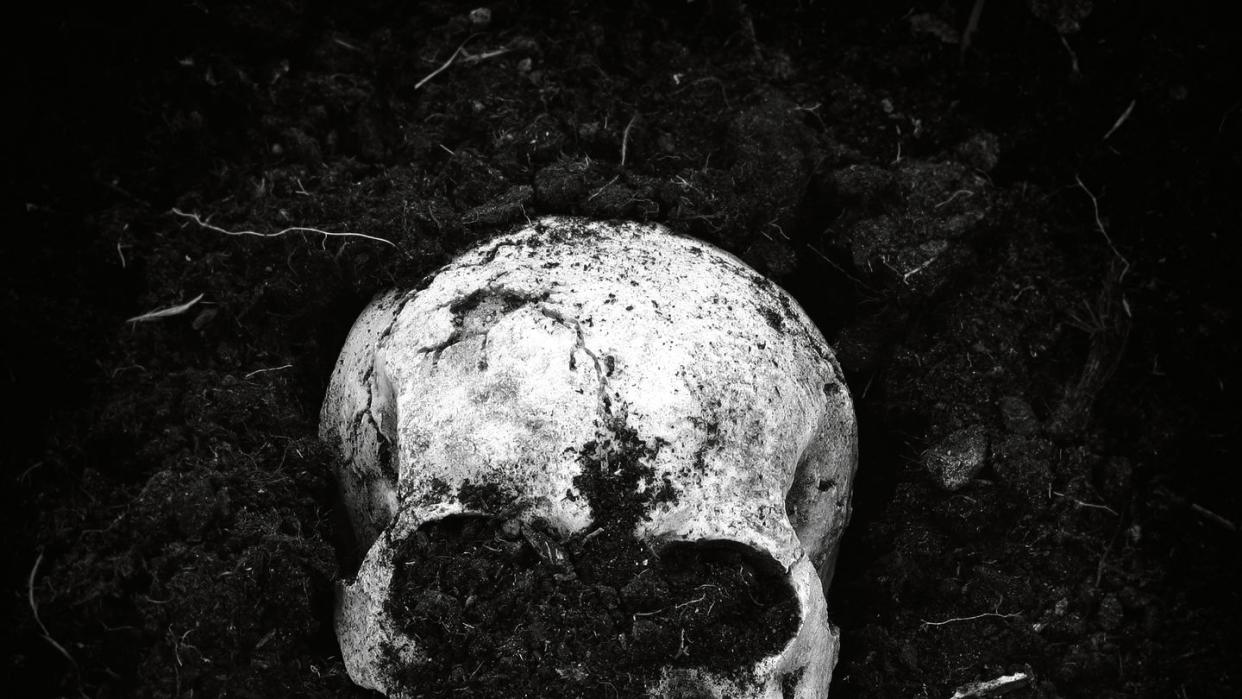Archaeologists Found Farmers' Skeletons in a Tomb. They Were All Missing Their Skulls.

A site in Tiarp, Sweden, is confirmed as one of the oldest stone burial chambers in all of Scandinavia, dating to the Early Neolithic period of about 3,500 BC.
While the remains show no signs of violent death, all of the skulls of those buried are missing from the chambers.
Researchers aren’t sure what’s behind the missing bones.
Initially, the excitement from a group of researchers studying burial chambers centered around the fact they’d found one of the oldest stone “dolmen” sites ever discovered in Scandinavia. But then something else got their attention—the grave was missing its skulls. And thigh bones.
“Skulls and large bones are missing and may have been removed from the grave,” says archaeologist Karl-Göran Sjögren said in a statement. “We don’t know whether that has to do with burial rituals or what’s behind it.”
The research team believes the grave in Tiarp, Sweden—dated to the Early Neolithic period, about 3,500 BC—has remained untouched since the Stone Age. But somewhere along the way, something happened to the skulls. The burial chamber did have plenty of bones from hands and feet, fragments of ribs, and additional smaller organic elements such as teeth. The larger bones, though, are “very few.”
“This differs from what we usually see in megalith graves,” Sjögren said. “Usually, the bones that are missing are smaller bones from feet and hands.”
The team produced a study on the find, published in the Journal of Neolithic Archaeology. According to the paper, the group from the University of Gothenburg and Kiel University believes that “ritual practices” may be at play in this oddity.
Testing on the bones has now shown that the chamber holds the remains of at least a dozen individuals, ranging from infants to the elderly. And while the team isn’t sure how they died, there’s no reason to believe beheading—or something equally sinister or gruesome—was the method. “We haven’t seen any injuries on the people buried so we don’t think violence is involved,” Sjögren said. “But we are continuing to study their DNA and that will show whether they had any diseases.”
In the agriculture-heavy region of Falbygden, passage graves are common. But the grave found in Tiarp is unique. For one, its likely up to 200 years older than other passage graves of the area, making it one of the oldest stone burial chambers in all of Scandinavia. It also boasts a slightly different construction, with a “little niche” at each end that wasn’t typically seen in the area when the passage grave architecture became popular.
The likelihood is that the people buried in the Tiarp dolmen were farmers, but the research team wants more information. They plan to study the available DNA to learn more about the skeletal remains—aiming to do everything from reconstructing family relationships to finding diseases.
The results may show the team why the people died, but may very well leave it the mystery of the missing skulls unsolved.
You Might Also Like

